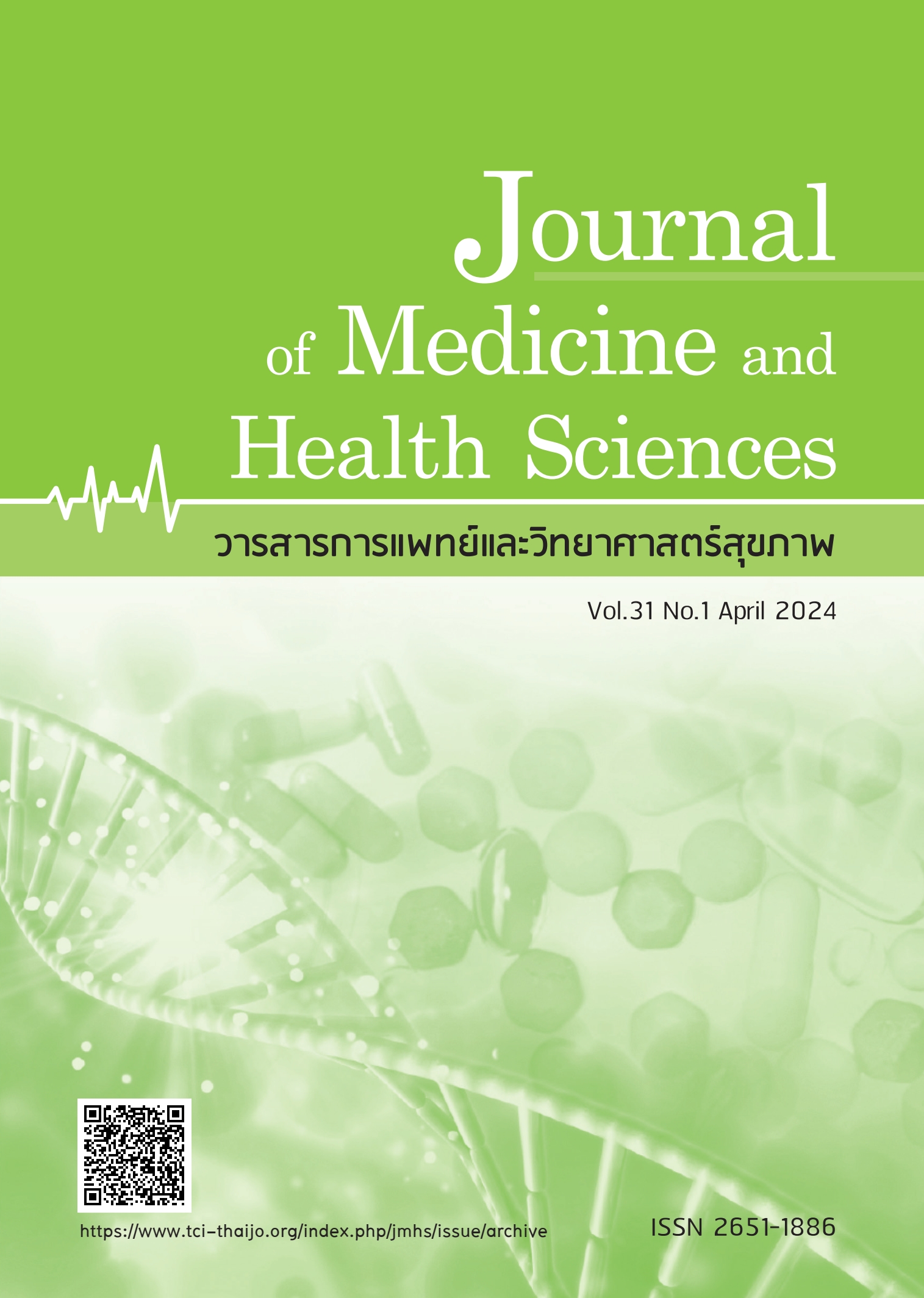Pathogenic bacteria and fungi from bat guano in restricted access caves, Kanchanaburi Province
Keywords:
Bat guano, MALDI-TOF MS, Bacteria, Fungi, Cave, Kanchanaburi provinceAbstract
Bats serve as carriers for various pathogens, with bat guano acting as a reservoir for microorganisms that can spread to the environment and cause infectious diseases in humans. This study aims to investigate the bacteria and fungi present in bat guano. Samples of bat guano were collected from restricted access cave areas and diluted using 10-fold dilutions into culture media. Initially, the researchers focused on studying fungi in bat guano, using Sabouraud Dextrose Agar supplemented with Chloramphenicol, and incubating at 37°C for 48-72 hours. Colonies were isolated, and pure cultures were obtained for analysis using MALDI-TOF MS. No fungal growth was observed at dilutions of 10-4 to 10-7, but growth occurred at dilutions of 10-1, 10-2, and 10-3. Additionally, the variety of culture media was expanded to include Sabouraud Dextrose Agar, Potato Dextrose Agar, and Malt Extract Agar, supplemented with Chloramphenicol, and incubated at 25 and 37°C. Analysis revealed 28 isolates after selective culturing, comprising both bacteria and fungi. MALDI-TOF MS identified 9 bacterial isolates, including Providencia stuartii, Bacillus subtilis, Bacillus amyloliquefaciens, Alcaligenes faecalis, Proteus mirabilis, Ochrobactrum intermedium, Achromobacter xylosoxidans, and Stenotrophomonas maltophilia. One fungal isolate was identified as Aspergillus versicolor. Unidentified isolates underwent DNA sequencing, revealing Cladosporium perangustum. This study highlights that the majority of microorganisms present in bat guano are naturally occurring bacteria, some of which are known to cause infectious diseases in humans. These findings contribute to further research and can be used to warn individuals at risk of bat guano exposure.
References
Rapin N, Johns K, Martin L, et al. Activation of innate immune-response genes in little brown bats (Myotis Lucifugus) infected with the fungus pseudogymnoascus destructans. PLoS One 2014;9.
Jones G, Jacobs DS, Kunz TH, et al. Carpe noctem: The importance of bats as bioindicators. Endang Species Res 2009;8:93-115.
Ferreira RL. Guano communities. In: White WB, editor. Encyclopedia of caves. 3rd ed. Cambridge (US): Academic Press; 2019. p. 474-84.
Dietrich M, Markotter W. Studying the microbiota of bats: accuracy of direct and indirect samplings. Ecol Evol 2019;9:1730-5.
Rodhain E. Chauves-souris et virus: des relations complexes. Bull la Soc Pathol Exot 2015;doi:10.1007/S13149-015-0448-z.
Banskar S, Bhute SS, Suryavanshi MV., et al. Microbiome analysis reveals the abundance of bacterial pathogens in Rousettus leschenaultii guano. Sci Rep 2016;6:36948. doi:10.1038/srep36948.
Norkaew T, Ohno H, Sriburee P, et al. Detection of environmental sources of Histoplasma capsulatum in Chiang Mai, Thailand, by Nested PCR. Mycopathologia. 2013;176:395-402. doi:10.1007/s11046-013-9701-9.
Dimkić I, Stanković S, Kabić J, et al. Bat guano-dwelling microbes and antimicrobial properties of the pygidial gland secretion of a troglophilic ground beetle against them. Appl Microbiol Biotechnol 2020;104:4109-26.
Cordero RJB, Liedke SC, Araújo GRDS, et al. Enhanced virulence of Histoplasma capsulatum through transfer and surface incorporation of glycans fromCryptococcus neoformans during co-infection. Sci Rep 2016;6:21765. doi:10.1038/srep21765.
Oltean HN, Springer M, Bowers JR, et al. Suspected locally acquired coccidioidomycosis in human, Spokane, Washington, USA. Emerg Infect Dis 2020;26:606-9.
Sugita T, Kikuchi K, Makimura K, et al. Trichosporon species isolated from guano samples obtained from bat-inhabited caves in Japan. Appl Environ Microbiol 2005;71:7626-9.
Nualmalang R, Thanomsridetchai N, Teethaisong Y, et al. (2023). Identification of pathogenic and opportunistic yeasts in pigeon excreta by MALDI-TOF mass spectrometry and their prevalence in Chon Buri Province, Thailand. Int J Environ Res Public Health 2023;20:3191. doi:10.3390/ijerph20043191.
De Leon MP, Montecillo AD, Pinili DS, et al. Bacterial diversity of bat guano from cabalyorisa cave, mabini, pangasinan, philippines: A first report on the metagenome of philippine bat guano. PLoS One 2018;13:e0200095. doi:10.1371/journal.pone.0200095.
Wolkers-Rooijackers JCM, Rebmann K, Bosch T, et al. Fecal bacterial communities in insectivorous bats from the Netherlands and their role as a possible vector for foodborne diseases. Acta Chiropterologica 2018;20:475-83.
Brooke JS. 2021. Advances in the Microbiology of Stenotrophomonas maltophilia. Clin Microbiol Rev 34:10.1128/cmr.00030-19. doi:10.1128/cmr.00030-19.
Hafiz TA, Aldawood E, Albloshi A, et al. Stenotrophomonas maltophilia epidemiology, resistance characteristics, and clinical outcomes: Understanding of the recent three years’ trends. Microorganisms. 2022;10:2506. doi:10.3390/microorganisms10122506.
Kasimova AR, Gordina EM, Toropov SS, et al. Stenotrophomonas maltophilia infection in trauma and orthopedic patients: Clinical experience and review. Traumatol Orthop Russia 2023;29:84-94. doi:10.17816/2311-2905-2027.
Downloads
Published
How to Cite
Issue
Section
License
Copyright (c) 2024 Journal of Medicine and Health Sciences

This work is licensed under a Creative Commons Attribution-NonCommercial-NoDerivatives 4.0 International License.



